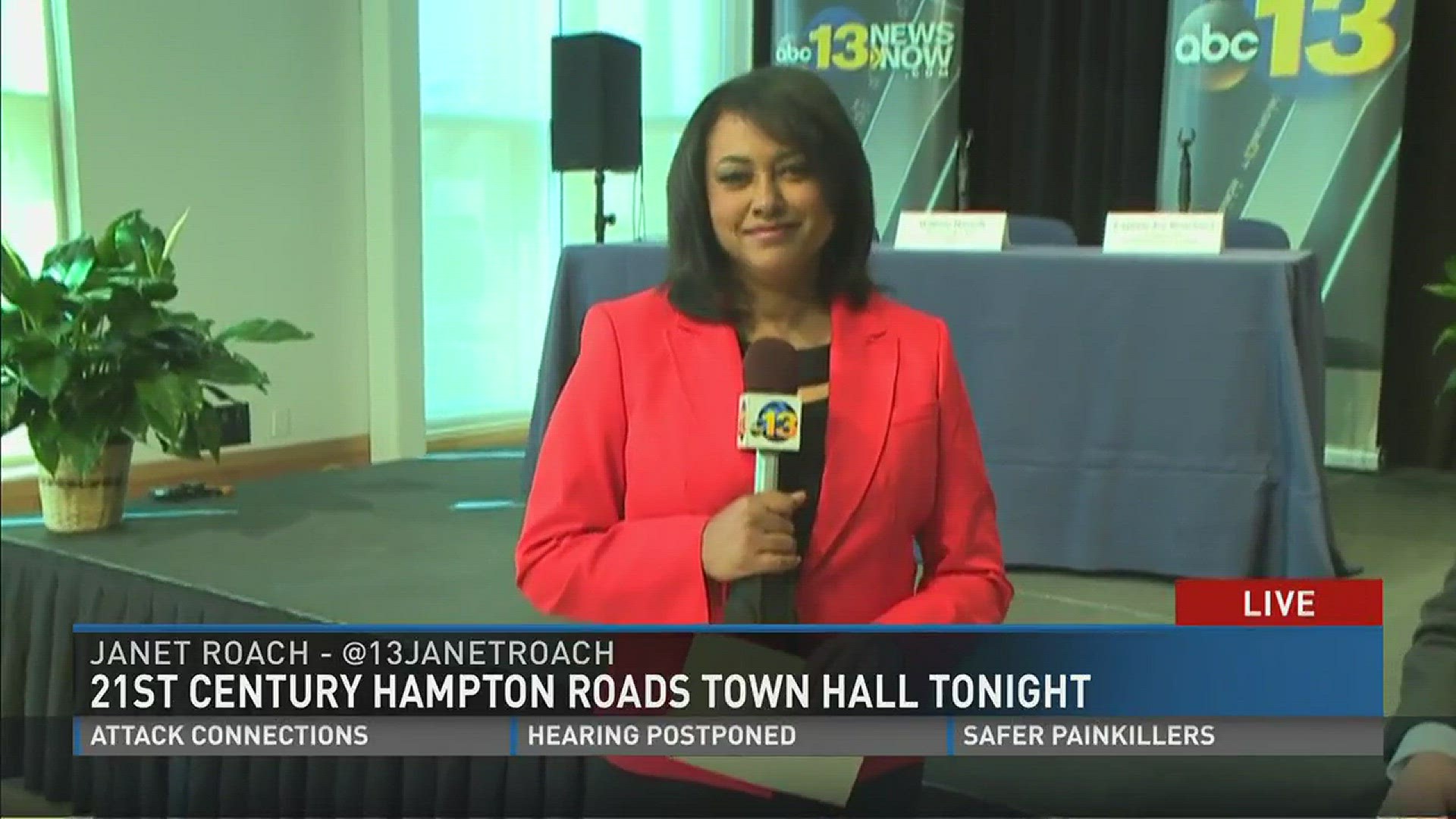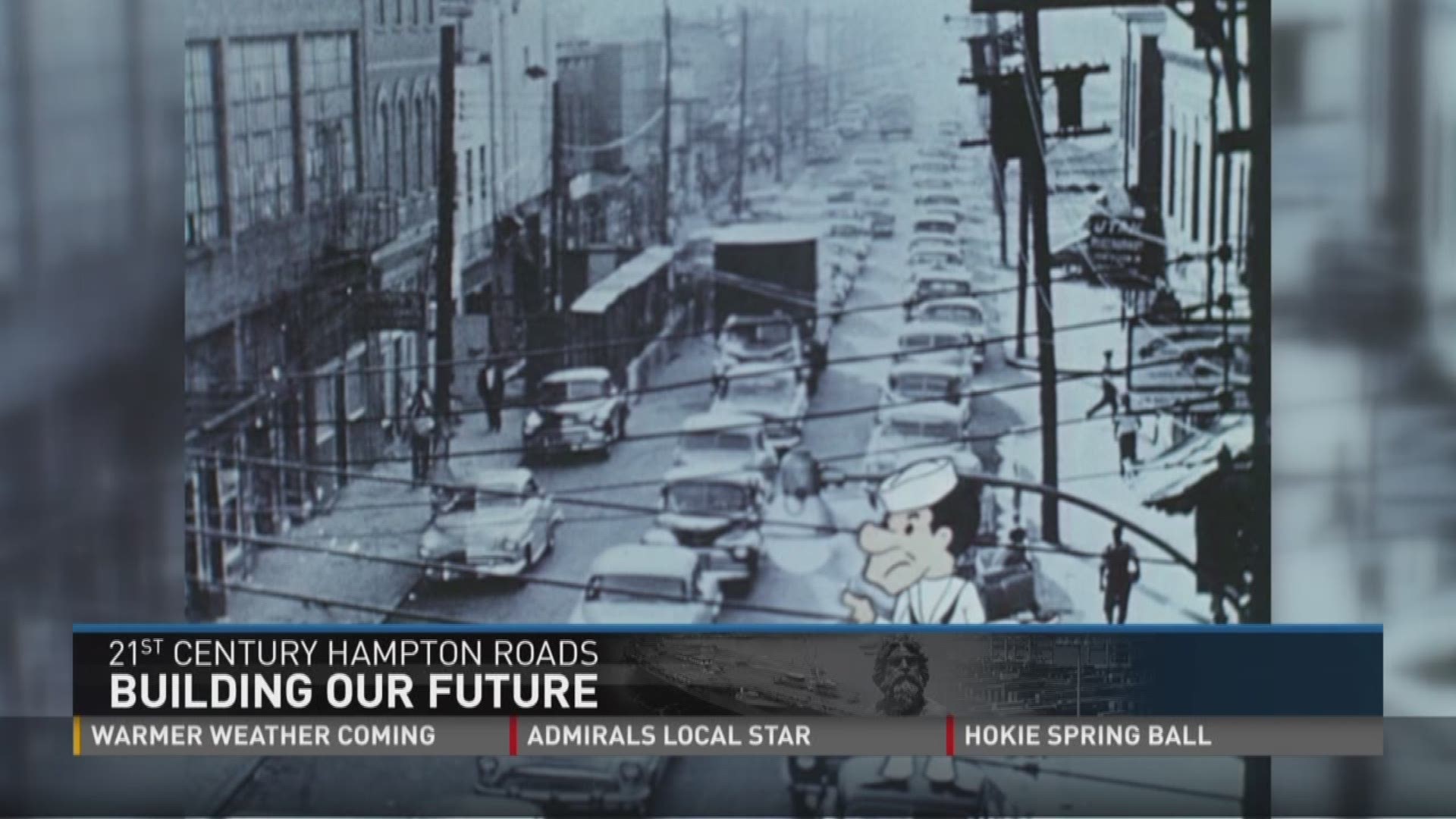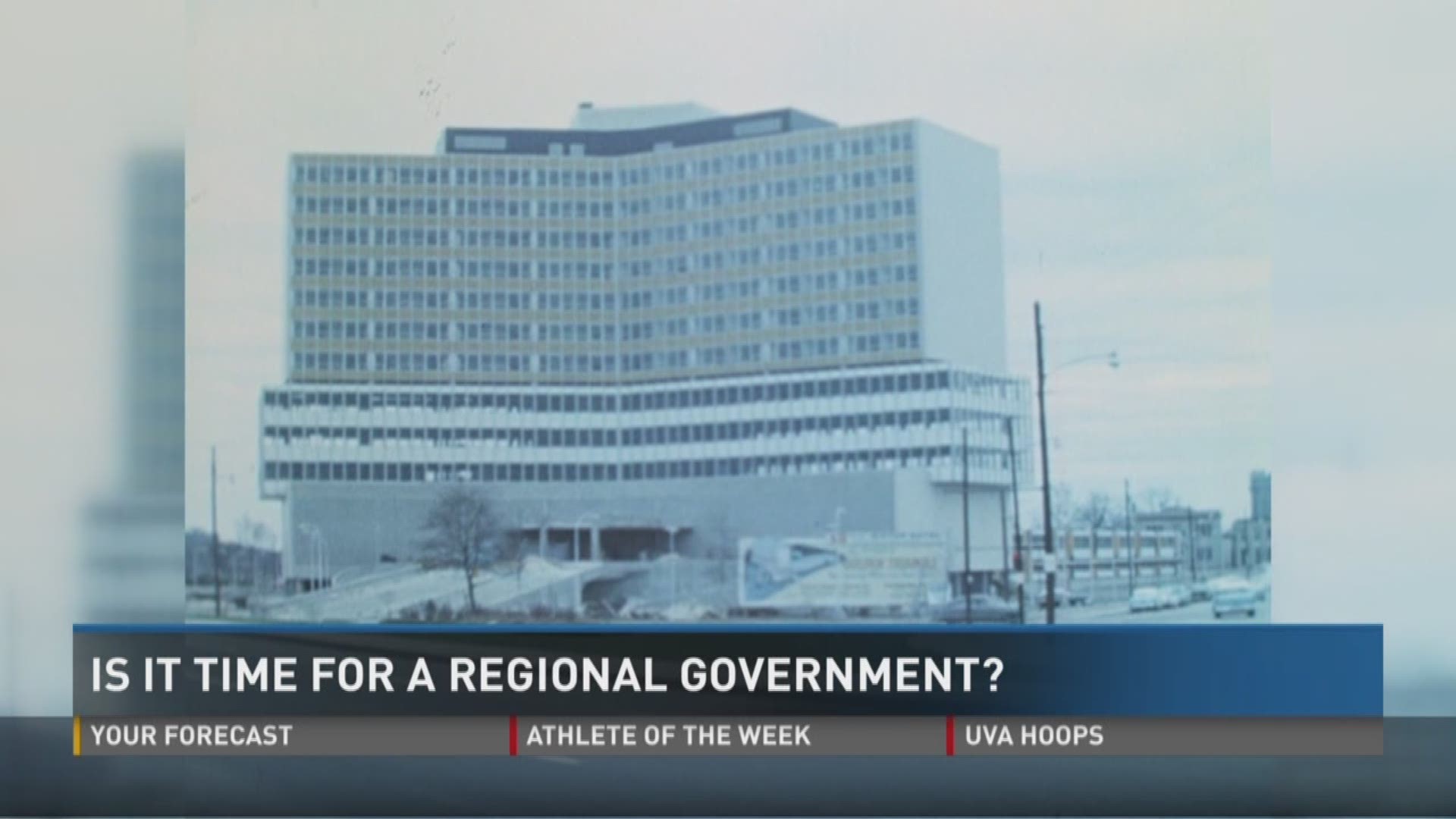What are we doing to build a successful 21st century Hampton Roads? One that is competitive, innovative, and on the cutting edge of technology? If you're under the age of 30, do you see the jobs and opportunities to keep you here?
On March 24, 2016, ABC 13 led that important discussion, on air and online, in a live town hall event: 21st Century Hampton Roads - Building Our Future. We gathered a number of the region’s top business leaders and elected officials to be a part of this discussion, including Governor Terry McAuliffe.
WATCH: 21st Century Hampton Roads Town Hall Event
Thanks to everyone for coming out to #13TownHall and following online with the conversation! pic.twitter.com/JkJlt4Am0h
— 13News Now (@13NewsNow) March 25, 2016
21st Century: Where Are We?
Are we as bold today as we were 50 years ago?
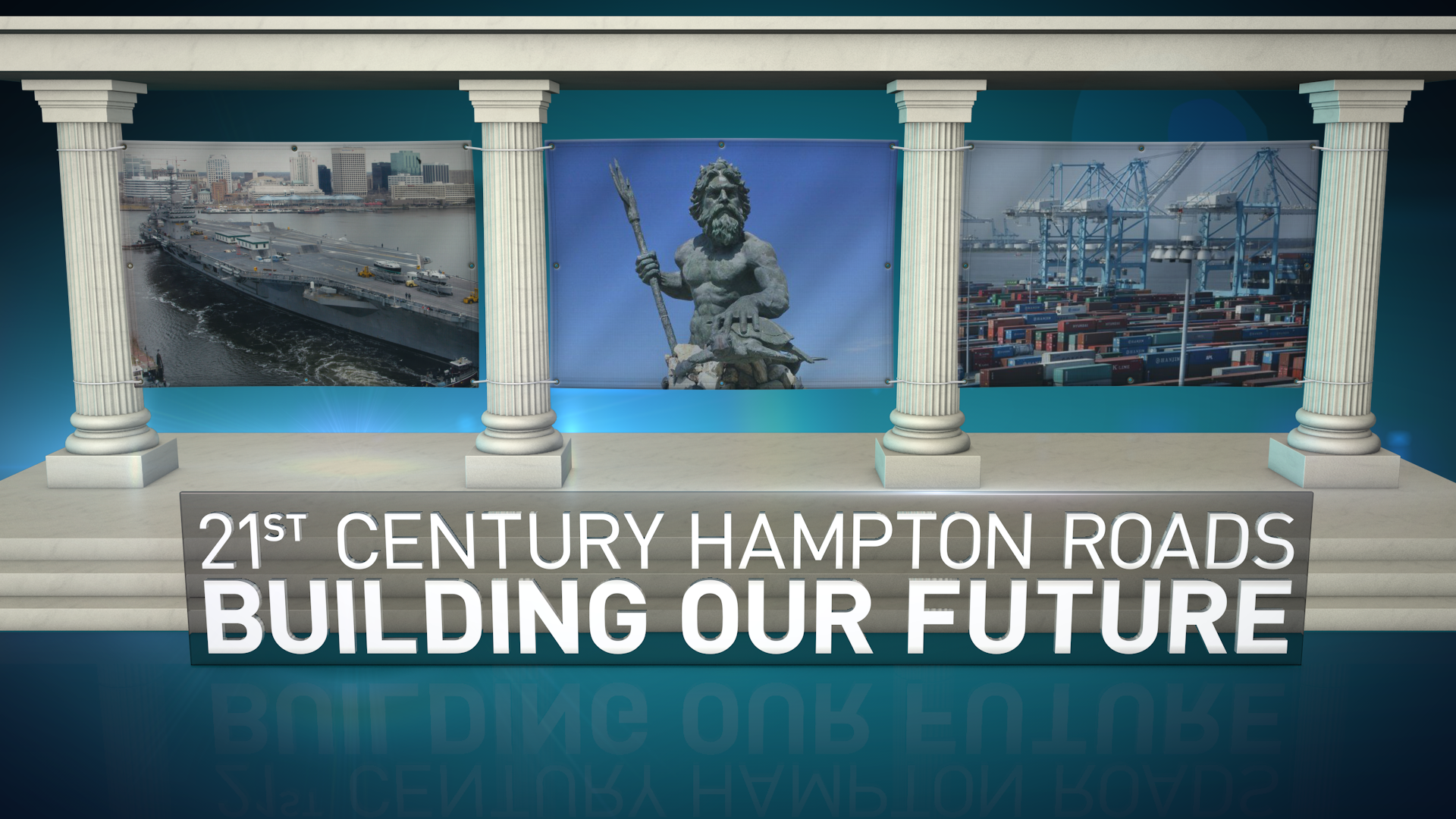
It’s been said, "Prediction is very difficult, especially if it is about the future."
A film from a time capsule that was recently opened in Hampton made some bold predictions about our area.
Fifty years ago, the region was brimming with optimism. There was a plan to turn the region into a major metropolitan area, the south’s leading market.
Many of those predictions for the region fell short.
Today, well into the second decade of the 21st century, the region once again finds itself searching for its future. Many predict Hampton Roads is falling behind, and time is running out to get it right.
The year was 1963. Norfolk, Virginia was looking to make a name for itself. Skyscrapers and hotels were going up downtown, along with office buildings and department stores.
Fifty years ago, the region was trying to show it was more than just an "encampment of servicemen." NASA was working on the Mercury project, and hopes for the region were equally sky high.
Predictions were that Norfolk would become the, “Manhattan of the South.” The area was building roads and bridges to connect Norfolk and Portsmouth to Hampton and Newport News.
Today Tidewater -- now Hampton Roads -- again finds itself struggling to chart its course, this time in a high-tech, fast-paced 21st century economy. And by most accounts, the stakes could not be higher.
“Either we advance or we stagnate," says Joe Bouchard, the former CO of Naval Station Norfolk. Bouchard says the global economy isn’t standing still, waiting for Hampton Roads.
“Either we keep pace with the changes in the global and national economy, or we will be left behind.”
When it comes to creating jobs, Hampton Roads is being left behind today. The latest data shows the region created only about 7,000 jobs in in 2015. In that same period of time, Orlando added 35,000 jobs. Average wages are flat, and defense spending is down.
Peter Shaw, an Economics and Business professor at TCC, says now more than ever, the private sector needs to step up or talented workers and creative companies will go to competing cities.
”Your talented and skilled labor force begins to realize those are the growth areas," Shaw says. "They’re going to leave, and once they leave, it’s very difficult to get them back.”
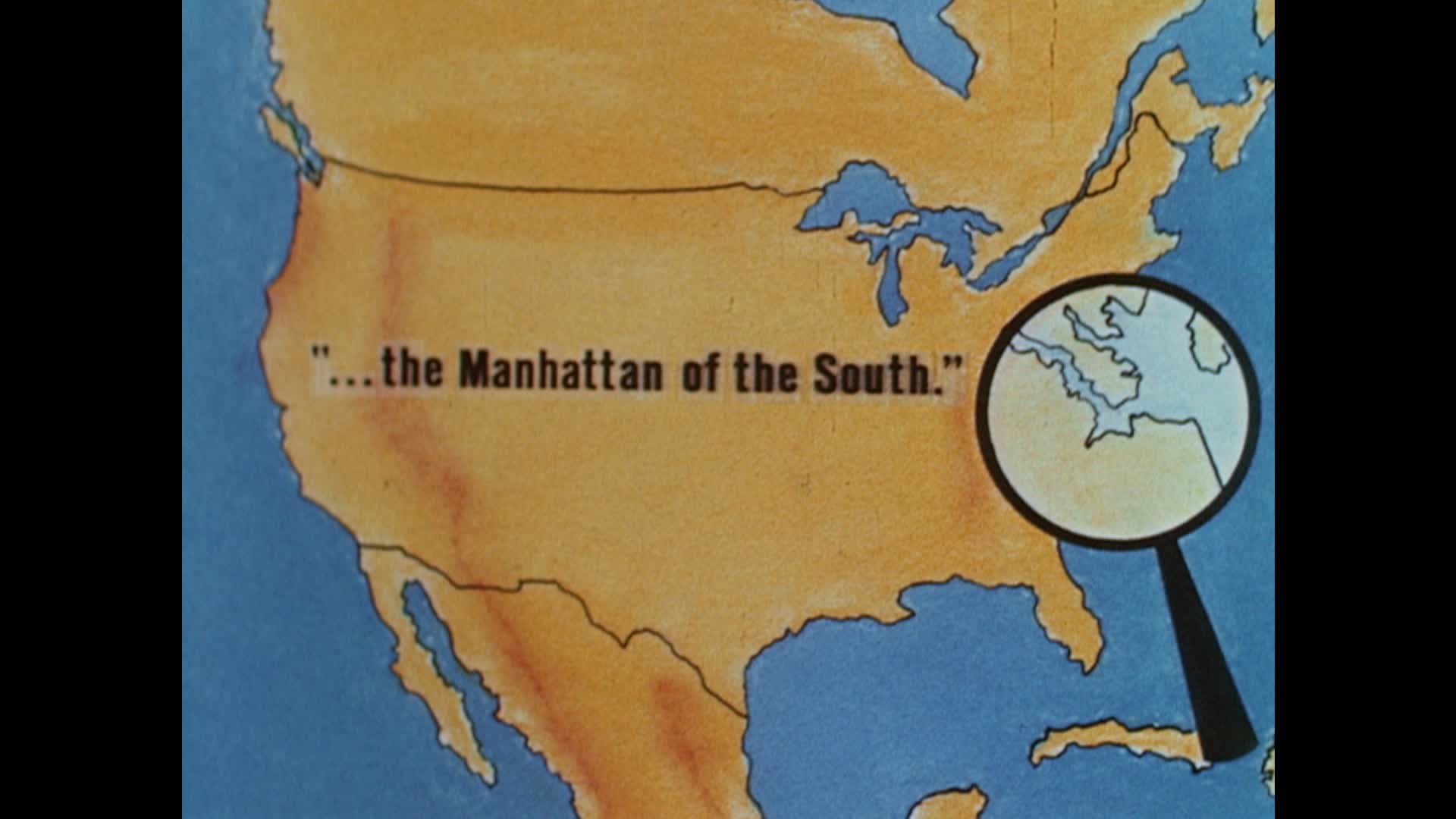
Shaw also says while Hampton Roads is in the top 50 metropolitan areas of the U.S., looking 10 years into the future, it should not be assumed we will stay there.
Recent shipyard layoffs and the downsizing of the government are real wake-up calls. And no one believes the region can build a strong 21st century economy without everyone working together and most importantly, creating the jobs and opportunities for young people to stay here.
“Remember, this millennial generation is highly mobile," says Shaw. "They’re not afraid to move, and they will.”
In building a 21st century, Hampton Roads is very much at risk of being overlooked. When the time capsule is opened in another 50 years, what will be said about how well we predicted the future in 2016, and what did we do to lead the way for the next generations?
In 1963, Tidewater was filled with big ideas Are we just as bold today?
Creating a 21st Century Workforce
Hampton Roads’ manufacturing companies struggle to find trained workforce
There are about 70 employees at Craft Machine in Hampton, and the managers would love to have several more.
Craft Machine is a custom manufacturing facility that makes critical components for the Navy, defense contractors, commercial companies, NASA and more. The company's products support ship building, material handling, pumps and mining equipment It's proof that manufacturing jobs are still alive and well. They're just more high tech and hard to fill.
"The hardest position I've had to fill right now is CC programmers and CC machinists. If I had 10 of them lining up at the door right now, I'd hire all 10," says Craft's Manufacturing Manager, Robbie Nugent.
The problem, Nugent says, is the Hampton Roads region is lacking a workforce that's trained in the high tech, engineering jobs of the future. He's pulling people from other states to fill his payroll.
"We're now having to bring people in from, I can name so many states... Texas, Louisiana, South Carolina, North Carolina, Oklahoma." %
Thomas Nelson's Advanced Integrated Manufacturing Center (AIM) is working to change that. The program's coordinator, Stuart Harris, Jr says the number one question companies have when they're considering to locate in Hampton Roads is whether the workforce is trained.
"Just on the Peninsula alone, there are over 20 large companies and 200 to 300 smaller companies around that need this workforce and across the region, there are over a thousand companies that need this workforce."
The workforce he speak of includes technicians who are critical thinkers.
"A technician that's multi-skilled that understands metal composites, how to integrate all those pieces into one component. The other part is machinists. You cannot find enough machinists in this area. Right now, machinists can pretty much name their own price, " says Harris.
The AIM center currently offers work-based learning experiences and an associate degree in Applied Science with a blend of classes in mechanical engineering, engineering technology, robotics and more. High school students who dual enroll in Thomas Nelson's Mechatronics program can graduate high school with 22 college credit hours.
"We're starting to get high school kids in the pipeline. We feel like that the key is to get the families and the young kids to understand about manufacturing careers."
Harris feels that manufacturing still has the stigma attached to it as being a low-paying field without room to grow.
In the meantime, he worries that Hampton Roads is behind when it comes to creating a 21st century workforce, which eventually stifles a 21st century economy.
"We lose our competitiveness. If these people leave our workforce, the companies that are coming in need the workforce to stay where they are or to even grow."
Is it Time for a Regional Government?
Such a government would mean elected representatives from across Hampton Roads, handling regional issues like sea level rise, transportation, and declining defense spending
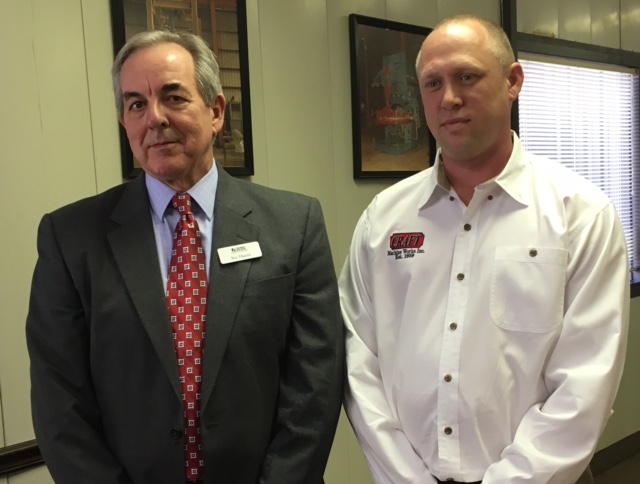
When a time capsule buried in Hampton was unearthed last year, there was a letter inside written by former Daily Press Newspaper editor William Van Buren, Jr.
It was September 1965, and he speculated that by the time the capsule was opened 50 years later, Hampton Roads would operate as one region. He wrote, "Our entire area will be combine under one government politically and economically, by the time this capsule is opened."
But 50 years later, one of the few people who dares to talk about creating a regional government in Hampton Roads is former Newport News Mayor Joe Frank, who's adamant that something needs to change with how 17 jurisdictions in Hampton Roads operate.
"If we had that, we could make progress more quickly," says Frank.
The progress Frank is talking about has to do with the issues that cross the borders from one city to the next.
"Environmental issues and federal relations, workforce training and transportation and training and economic development," Frank names a few.
Representatives from each jurisdiction would be elected, and even have a mayor. But local governments would stay intact to handle police, schools, firefighting, trash pick-up and more.
A 13 News Now/CNU Wason Center for Public Policy poll shows divided support for a regional government. When the participants were asked if they would support the idea of a regional government structure or oppose it, 47 percent are in support, 42 percent oppose it, and nine percent are not sure.
However, 86 percent of the participants think local officials should work together more.
The Wason Center for Public Policy's director, Dr. Quentin Kidd, says the poll shows there is interest in more regional cooperation... but some hesitancy over more government.
"When it comes to the legal structures of working together, do we want a larger regional governance? We're divided on that."
Frank knows that selling the public on a regional government will take an educational campaign first. That's where he says the Center for Regional Excellence comes in. It would be housed at ODU with the purpose of studying the economic successes of similar-sized jurisdictions and coming up with a plan for Hampton Roads.
The timeline for when such a center would be up and running is still in the air. But Frank promises, it will be sooner than later.
"The public is ultimately going to say we understand how important that is and see it not as a new burden, but as a new opportunity."
The Millennial Factor
Building a community that is attractive to Millennials.
You’ll find them in bars and coffee shops. You’ll also find Millennials in places like Norfolk’s Neon District and around the food scene.
Millennials also are seen as critical to the region efforts to build a thriving 21st century economy.
“One day we’re going to be the leaders of businesses and local governments," says Julia Rust, a local attorney and Liberty University graduate. She is one of a growing number of Millennials who -- for now -- are bullish on Hampton Roads.
“There are a lot of job opportunities in the private sector. There’s a lot of growth in technology. There are a lot of public sector jobs as well.”
That thinking is a clearly a bright spot for a region that lags well behind other cities across the country for attracting young professionals. While no one believes a region can build a 21st century economy without Millennials, the good news is recent polling by Christopher Newport University clearly shows the region gets that.

Ninety-four percent of those polled agree the region needs to give Millennials a reason to stay and work in Hampton Roads.
"There’s a deep, deep level of understanding that the region has to be creative and flexible and willing to try things out in order to be attractive to young people, Millennials," says Quentin Kidd.
Rust says Millennials need to see that the region is willing to keep up with cities across the country that have a well-established appeal to young professionals. Their generation is not like their parents.
“We can go anywhere," Rust says. "We can work from home. We can work from different cities. Our friends and families are everywhere.”
TCC Business and Economics Professor Peter Shaw says the mobility of Millennials is something the region’s leaders really need to pay close attention to.
“If we don’t attract more progressive 21st century companies, why would this Millennial generation hang around?" Shaw asks. "They’ll go to those place and those communities that are more progressive.”
Rust says Millennials want to see Hampton Roads market itself better, and their views also mirror the results of our CNU polling, which shows 86 percent of people feel local officials should work together for the good of the region.
“If they gave up on making transportation better, if they gave up on making school systems better, Making our technology systems better... if they gave up on competing, then I think it would be a real sign to Millennials that this isn’t the place they want to be," she says.

